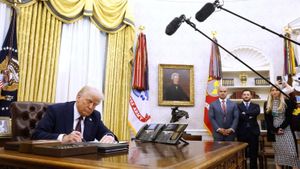On April 1, President Donald Trump signed an executive order imposing hefty tariffs on imports from Canada and Mexico, affecting them with 25% tariffs, and 10% tariffs on products from China. This measure is to take effect from April 4 and will continue until the national emergency concerning illegal immigration and the influx of synthetic opioids like fentanyl is resolved.
The recent announcement sent waves through the financial markets and elicited sharp reactions from economic analysts. Nick Twydale, Chief Market Analyst at ATFX Global in Sydney, stated, 'The markets are likely to react negatively on the opening of the week, particularly for currencies like the Canadian dollar, Mexican peso, and the Chinese yuan, as expectations of tariff evasion have diminished.' This reflects market sentiments, where broad-based tariffs are viewed with skepticism and apprehension.
Dustin Reid, Chief Strategist for Bonds at Mackenzie Financial in Toronto, cautioned, 'The tariffs are likely to have significant adverse effects on prices within the US, which will strike directly at equities and high-beta assets.' This sentiment was echoed by Mark Marek, Chief Investment Officer of Seabert Financial, who commented on the market's previously favorable stance toward Trump, noting, 'This time, the market may actually challenge Trump, marking the end of its honeymoon phase with the administration.'
Analysts have raised concerns about the broad application of tariffs, which could be detrimental to economies closely linked through trade, like Canada and Mexico. Rick Meckler, Partner at Cherry Lane Investments, voiced his doubts, saying, 'Generalized tariffs aimed at multiple products often prove to be misguided. This is likely why the markets have maintained a skeptical attitude, and volatility is to be expected now.' Indeed, the potential for serious repercussions from these tariffs has been well-documented.
Particularly at stake is the automotive manufacturing sector, heavily reliant on cross-border supply chains between Canada and the United States. Windsor, Ontario, once known for its automotive, had been effectively utilizing border crossings for significant trade flow, amounting to around $300 million daily.
This situation underlines the very complex relationship between tariffs and trade practices. Major trade discussions took place emphasizing domestic manufacturing, particularly as Trump pushed for US-based production as the solution to these tariffs. 'We need to make products here,' Trump stated, reinforcing his commitment to prioritizing American production and employment.
The challenges faced by Canadian manufacturers could have long-lasting impacts due to the intertwining economies of the US and Canada, particularly since automobile production often involves parts sourced from both nations. Each vehicle may contain components manufactured across the border, raising concerns about how new tariffs will drive up production costs.
With various economic experts weighing the pros and cons of these tariffs, there is widespread agreement on the need for careful scrutiny. Missteps could impact not only American consumers facing higher prices but could disrupt existing supply chains for numerous industries.
Such strategic decisions by the Trump administration reveal the multifaceted impacts of international trade policies. Amidst the widespread backlash, focus zeroes in on not just the immediate market reactions, but also on long-term consequences for workers and regional economies.
Though the administration argues these tariffs will favor US industries, many economic analysts remain cautious, urging for more comprehensive trade strategies rather than imposing broad tariffs on key allies and trading partners.



